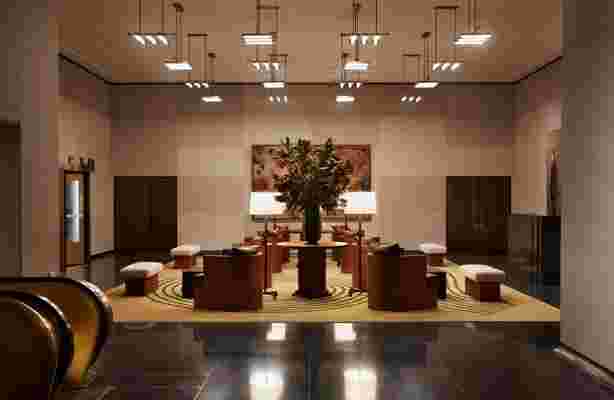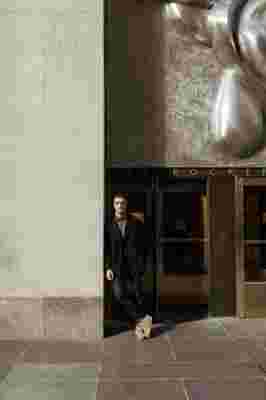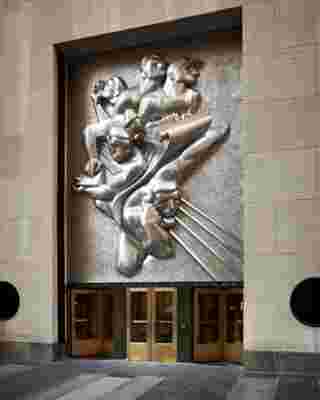With its striking façade that includes a ten-ton stainless panel by the celebrated American sculptor Isamu Noguchi, 50 Rockefeller Plaza is one of Rockefeller Center’s most notable buildings. Built in 1938, the 16-story Art Deco tower was originally the headquarters for the Associated Press and now counts the law firm Katten and CPA company Citrin Cooperman among its tenants. But even the most elegant grand dame can always use a freshening-up — and 50 Rock is no different. Over the past two and a half years, the building’s interior spaces have been given an inviting new look.

Most of the recent transformation happened in the lobby and was led by the celebrated interior designer Andre Mellone of Studio Mellone . The project is part of a larger hospitality initiative by Tishman Speyer , the owner of Rockefeller Center, to make its commercial buildings more residential-feeling and welcoming. According to a spokesperson, the initiative started well before the pandemic as part of its portfolio-wide focus on hospitality. It seems particularly prescient at a time when landlords are trying to find creative ways to bring people back to the office. Their lobby re-imaginations, introducing designer furniture and music, are at the heart of the mission to make these spaces less functional and more user-friendly.

Andre Mellone
In its new iteration, walking into 50 Rockefeller Plaza is akin to entering a chic boutique hotel. A signature scent of white tea and thyme wafts through the lobby and eclectic pop music, in a playlist curated by the London-based NTS Radio, invites people to settle in. Stylish furniture by Green River Project and aged brass lighting fixtures by Apparatus Studio add to the stay-a-while feel as does the gold and dark green Art Deco-inspired rug.
Studio Mellone went heavy on the brass, bronzed steel, and terrazzo details in the redesign: the walls are crafted with curved limestone, for example, and oversized urns filled with magnolias are a custom piece made of bronzed steel. The shiny floors are in a black terrazzo and have metal details in aged brass. “I was inspired by Rockefeller Center’s original materials which are limestone and brass,” says Mellone. “The complex is an icon, and a pull toward Art Deco felt natural.”
Art is a feature, too, and gives the lobby a hip gallery vibe. Colorful pieces by prominent contemporary artists Florian Schmidt, Alexander Ross, and Axel Gris are all part of the display.
While the entrance to the lobby is the most visible to anyone who enters, Mellone also got creative in rethinking its rear area, set off by the elevators. This back-alley of sorts looks like a café with its sleek wood tables and chairs and mirror with brass rosettes. Already, according to a spokesperson, people are lounging and chatting in this space instead of simply hurrying through.

In addition to Mellone’s lobby, 50 Rockefeller Plaza has a new three-quarter-acre rooftop, called Radio Park, with tables and green spaces, where tenants are encouraged to eat lunch, enjoy their morning coffee, and hold meetings.
“Since its inception, Rockefeller Center has set the standard for enlightened urban design,” says Rob Speyer, Tishman Speyer’s president and CEO. “Our reimagination of the lobbies, along with the creation of Radio Park, honors and builds on that foundation. Our spaces are designed to make people feel happy and provide a welcoming atmosphere—from the music that fills the lobbies, to the bespoke furniture and lighting.”

Leave a Reply